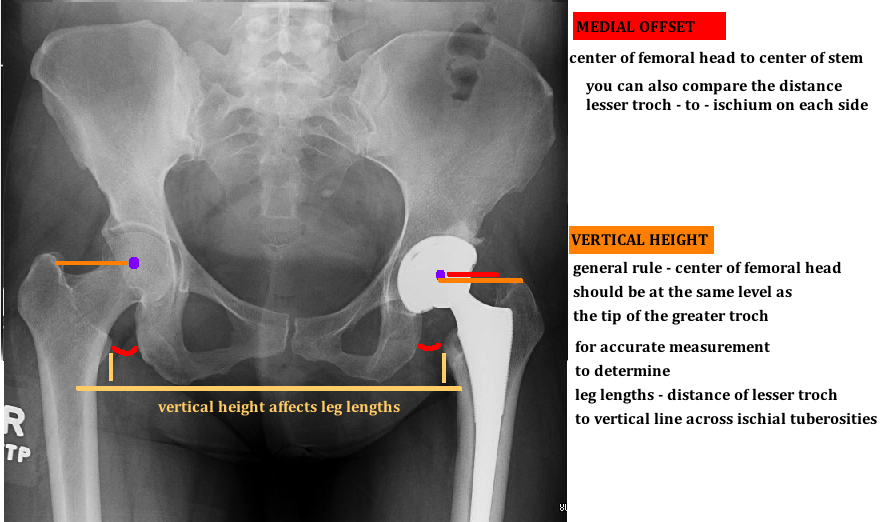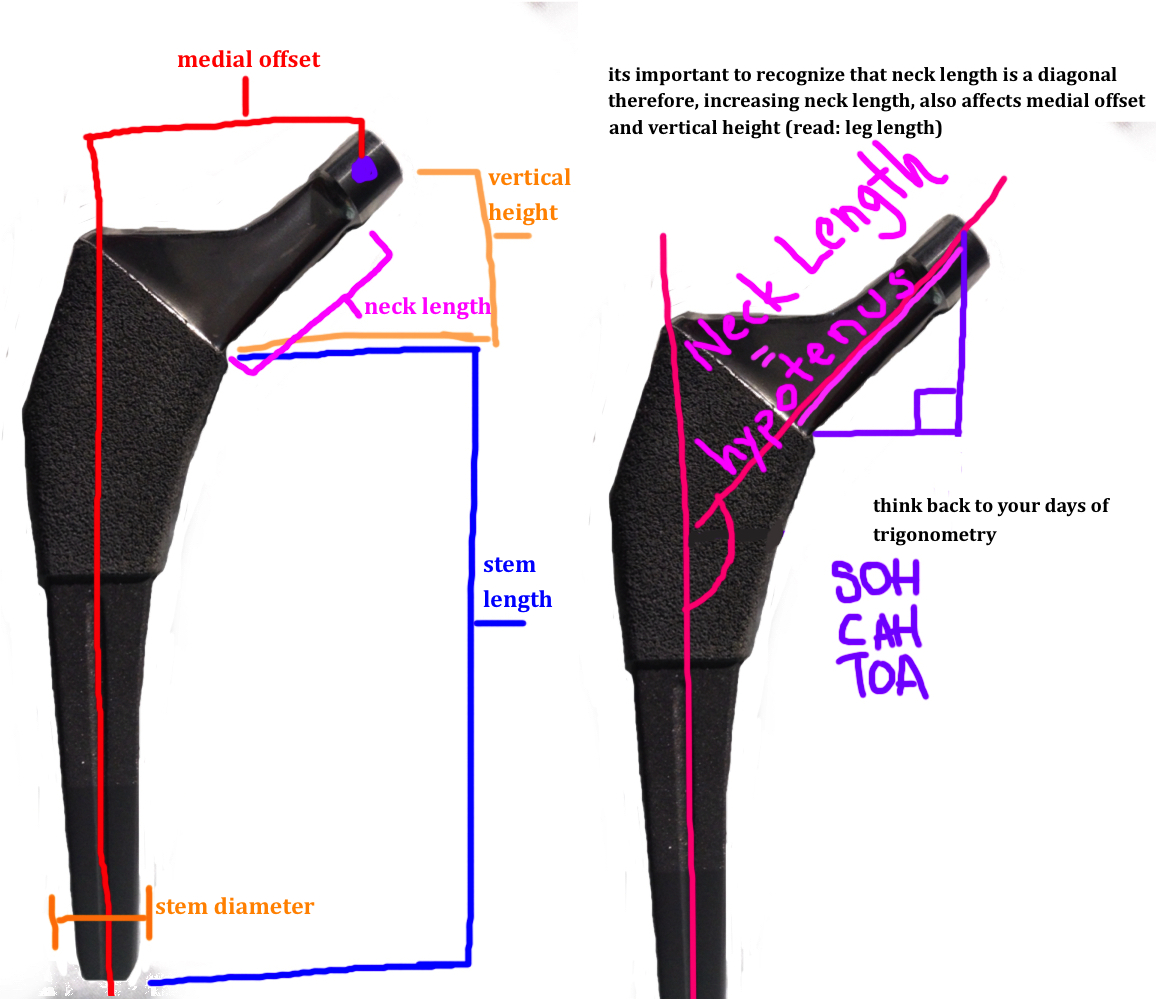Goals of stem placement are to 1) restore medial offset, 2) restore leg length (read: vertical height), 3) restore femoral anteversion (average 15 degrees).
1. Medial offset should be determined by templating (some patients require standard offset, others require high offset - aka greater medial offset). The advantage of high offset is that it lateralizes the center of the femoral stem and therefore places greater tension on the abductor mechanism, giving greater stability to the implant. The disadvantage of high offset is that it can place excessive tension on the abductors and cause trochanteric bursitis.
2. Vertical height is determined by where the center of the femoral head sits. Vertical height can be increased if the stem doesn't fully sit properly (referred to as a "potted stem"). Vertical heigh can be increased if the stem is put into valgus (tip of the stem touches the medial cortex of the femur). Vertical height can be increased via +4, +8 etc femoral head (although putting on a +4 femoral head increases the neck length +4, so it affects both the medial offset and the vertical height as a calculation of SOH-CAH-TOA).
3. Femoral Anteversion is about 15 degrees, but the native anatomy of the femur often dictates the version for a press-fit stem (for a cemented stem, or an S-ROM stem, the surgeon has much more control over the femoral version). Many surgeons use the posterior cortex of the femur, at the femoral neck cut, as their guide for setting version.



